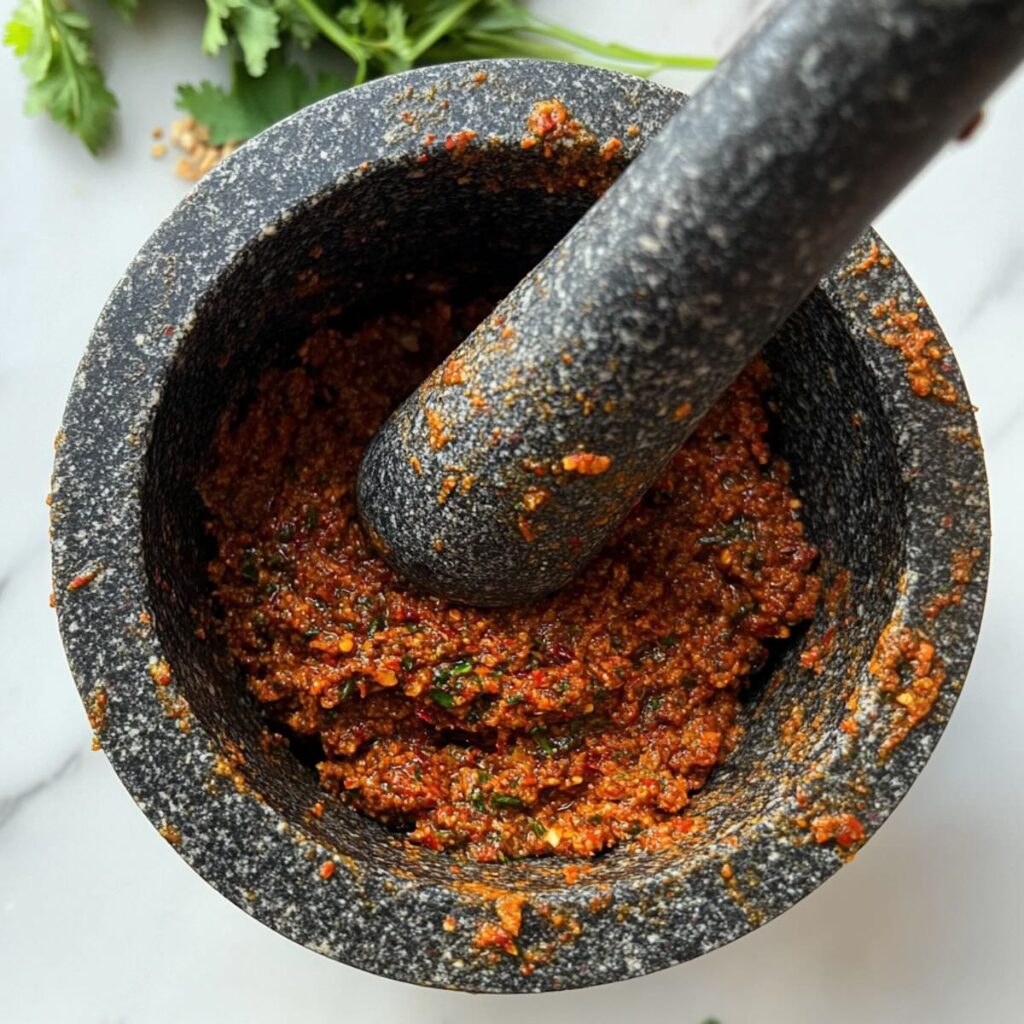
Have you ever felt super intimidated to try making a Thai dish you adore? Like only magical Thai chefs have the superpowers to make it, so why even try?
Usually I’ll try making any Thai dish I’ve had in Thailand at home, but homemade Thai curry paste always seemed like one of those super intricate processes that only super hero Thai cooks create.
The part that freaked me out the most about making Thai curry paste from scratch is that the ingredient list is so long it takes a few trips to my pantry and fridge to get all the ingredients, and many of the ingredients aren’t just thrown in but minced, which means extra work.
But in the end it was worth it.
I loved seeing each and every ingredient that went in the Thai curry paste on its own, and then watching how all their unique powers combined to become a super flavor packed Thai curry paste that I made with my own hands!
If I can learn how to make make my own homemade Thai Panang Curry Paste, you can too! Let me show you how dear
What Thai Chili do you use to make homemade Red Thai curry paste or Panang curry paste?
Finding the right chili to make homemade panang curry paste was the hardest part!
All the millions of Thai recipes I looked at said that you should use Thai dried red chilies, and no more description past that.
But then when I started watching tons of Homemade Thai Red Curry Paste Recipe videos that my Thai Hubby found from Thailand, I saw even though I was using a dried red Thai chili and the person in the video was using one too, it wasn’t the same kind.
I was using what was labeled Thai dried chili, which is small, but packed with heat.
I started with 7 chilies, but the curry paste turned out not looking red, but instead like an off color weird white instead of a deep red because it wasn’t the right Thai chili.
Has your homemade Thai curry paste ever looked like that too?!
I finally discovered when making Thai red curry paste, or Thai panang curry paste from scratch the authentic Thai chili to use is dried Thai Spur Chilis, which are longer than the typical dried red Thai chili you find at most Asian markets. But Thai Spur Chilis are not as easy to find.
But one of my favorite Thai food bloggers from Hot Thai Kitchen gave me a tip that if you are making Thai red or panang curry paste, but can’t find Thai spur chilies to substitute with dried Guiyallo chilies. They are huge, red as a Thai Spur Chili, but mild!
And it worked!! My curry went from yellowish brown to tomatoey red, just the color a Thai panang curry paste should be!
How to Make Homemade Thai Curry Paste
Once you have all your Thai curry paste ingredients, you can pound the curry paste in a stone mortar and pestle, or you can use a food processor.
Be warned, through pounding or the food processor it wont end up quite as smooth as if you bought one from the store because they have fancy machines in a factory that make it super smooth. But as long as there aren’t massive chunks of things and it’s fairly smooth, it should work fine.
If you are using your stone mortar and pestle it really matters what you put in first, it’s best to start with the tougher ingredients, but mince them as fine as possible, so it’s easier to break down. Start with the garlic, galangal, shallots and chilies and move on from there to what’s easier and easier to break down and end with your spices, which really just need to be mixed on up.
If you are using the food processor, you don’t have to worry as much about how fine you chop your ingredients. I add the water that I soaked the chilies in when I’m grinding up the paste in the food processor to help the curry paste break down more. If it seems like it’s really chunky, adding water should help it smooth out more when blending it.
How to Use Thai Red or Panang Curry Paste
Here are some of our favorite ways to use homemade Thai Panang Curry Paste:
- Chu Chee, our favorite Thai salmon curry: such a simple, quick but fancy feeling weeknight meal!
- Beef Panang Curry: Thai Hubby loves Panang with beef, but really you can use and protein you adore!
- Thai Curry Fried Rice: Love to use extra tablespoons of Panang curry paste to make Thai curry flavor packed fried rice!
If you are using homemade curry paste compared to store bought, I usually add in more curry paste than what the recipe says, but really it’s up to how your curry paste tastes and your preference.
How to Store Thai Red or Panang Curry Paste
This recipe will make extra curry paste, so feel free to freeze it in ice cube trays, or just a freezer safe container of choice and defrost when ready to make dinner.
If you really want to learn more about what goes into Thai curry pastes, making your own Thai curry paste is the best way to start!
Looking for other homemade Thai curry paste recipes? Check out my Massaman Curry Paste recipe or my Tom Yum Paste recipe!
Don’t forget I’m here for you dear and would love to answer any questions. If you make it, I want to see! Take a pic and tag us on Instagram @thaifoodie!
Print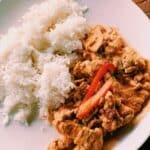
How to Make Thai Panang Curry Paste
- Total Time: 25 minutes
- Yield: 4 1x
- Diet: Gluten Free
Description
Want to jump into the world of making your own homemade Thai Panang Curry paste but nervous to take the plunge? I feel ya, but this simplified recipe will help you learn the magic!
Ingredients
7 Thai dried red chilies, de-seeded
3 guajillo chilies, de-seeded (Or instead of the Thai dried red chili and guajillo peppers use 7–10 dried Thai spur chilies, depending on spice preference)
6 kaffir lime leaves
1 lemongrass stalk, minced
1 tbsp minced galangal
1/2 tsp. white pepper powder
1/2 tsp. ground cumin
1 tsp. ground coriander
4 Asian shallots minced or 2 shallots
2 tbsp minced garlic
2 tsp shrimp paste
1 tbsp peanuts (optional, only use if making Thai Panang Curry Paste)
1 tbsp cilantro stems minced or cilantro root
1/2 tsp salt
Instructions
Soak the Thai chilies and guajillo chilies (or spur chilies if you found them) in warm water for at least 20 minutes. Save the water you soak them in to help you when making the curry paste.
Mortar and Pestle Option
If you are using your mortar and pestle it really matters what you put in first. It’s best to start with the things that are harder to break down, like the garlic, galangal, shallots and chilies and move on from there to what’s easier and easier to break down and end with your spices, which really just need to be mixed on up.
Add a tablespoon of the chili soaking water at a time to help in breaking down the ingredients and forming the paste.
Food Processor Option
Or you can add all the curry paste ingredients to a food processor or blender. Pulse or blend on high, adding the chili soaking water as needed until all the ingredients are chopped, and it starts to look like a paste.
It wont look as smooth as a store-bought curry paste because those are made with a machine that can break them down more, as long as there aren’t huge chunks of ingredients in it, and it seems mostly smooth, it’s good to go!
Use immediately, and any leftovers can be stored in an airtight container in the fridge for a week or the freezer for 3 months.
Use it
Here are some of our favorite ways to use homemade Thai Panang Curry Paste:
- Chu Chee, our favorite Thai salmon curry: such a simple, quick but fancy feeling weeknight meal!
- Beef Panang Curry: Thai Hubby loves Panang with beef, but really you can use and protein you adore!
- Thai Curry Fried Rice: Love to use extra tablespoons of Panang curry paste to make Thai curry flavor packed fried rice!
Notes
The difference between Thai Panang curry paste and Thai Red Curry paste is that Thai Panang curry paste has peanuts, and more cumin and coriander in it the paste and Thai Red Curry doesn’t.
- Prep Time: 20
- Cook Time: 5
- Category: Thai
- Method: Paste
- Cuisine: Thai

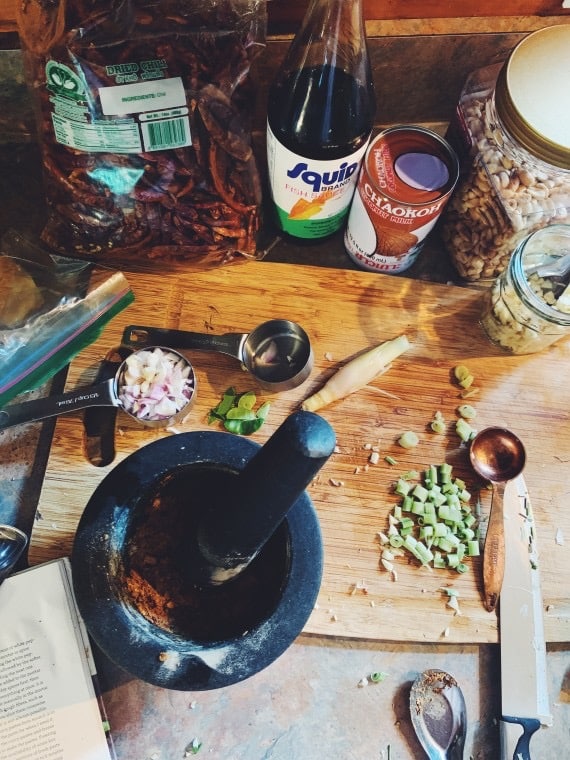
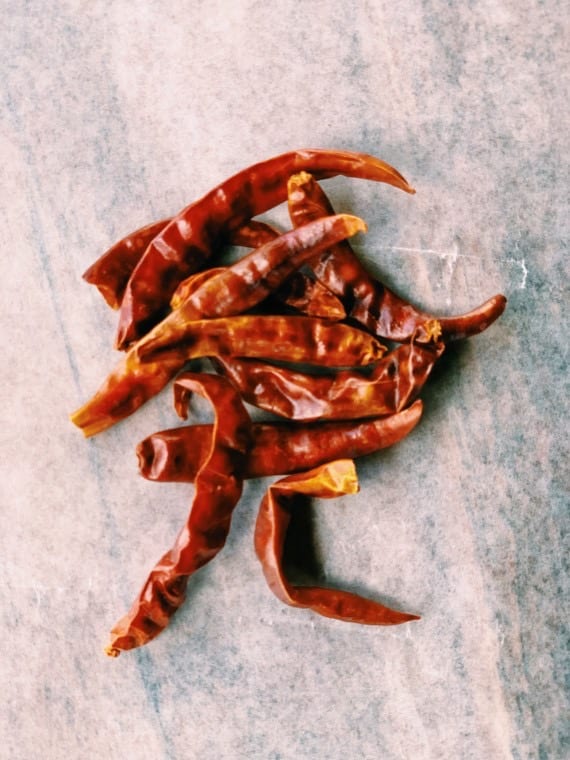
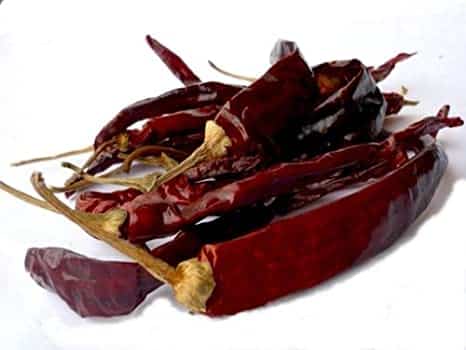
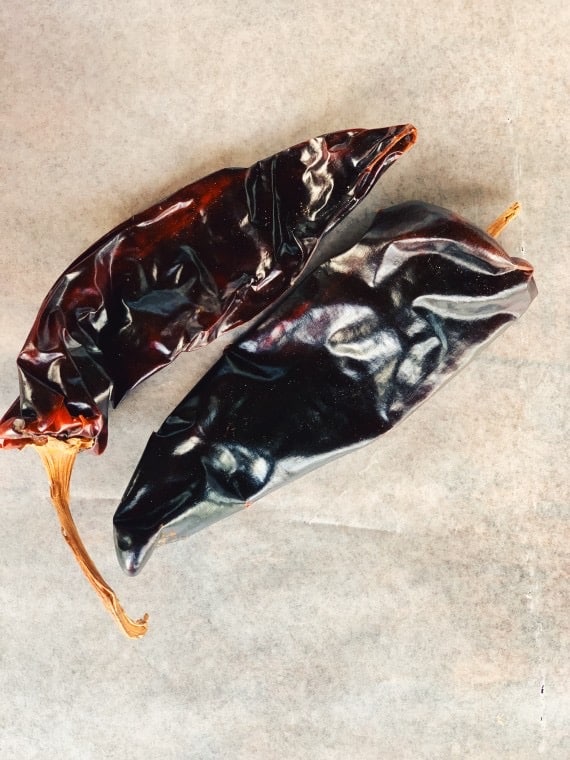
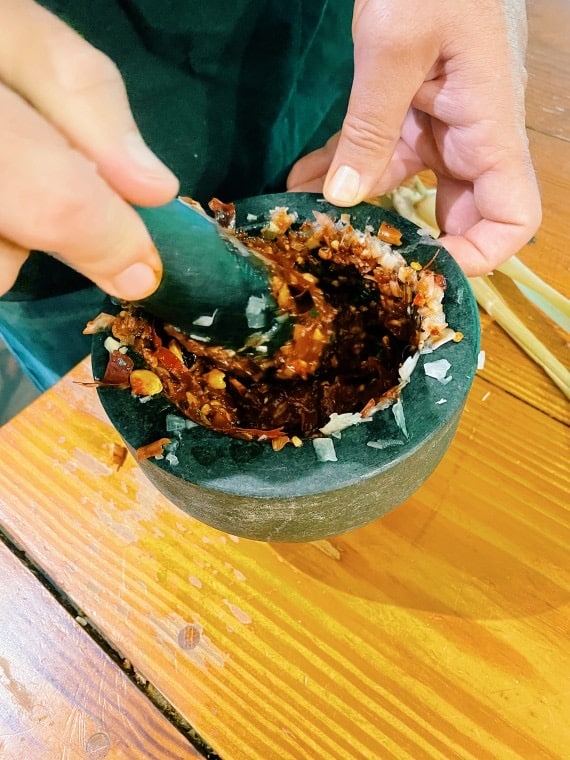
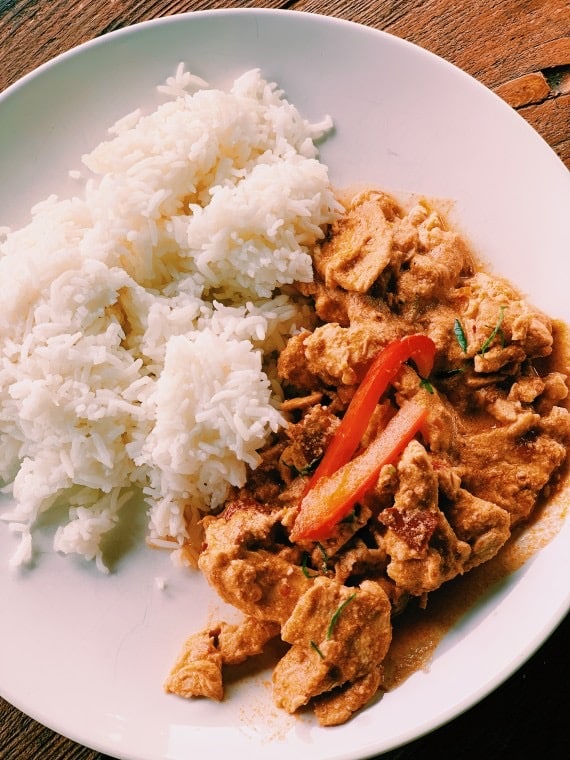

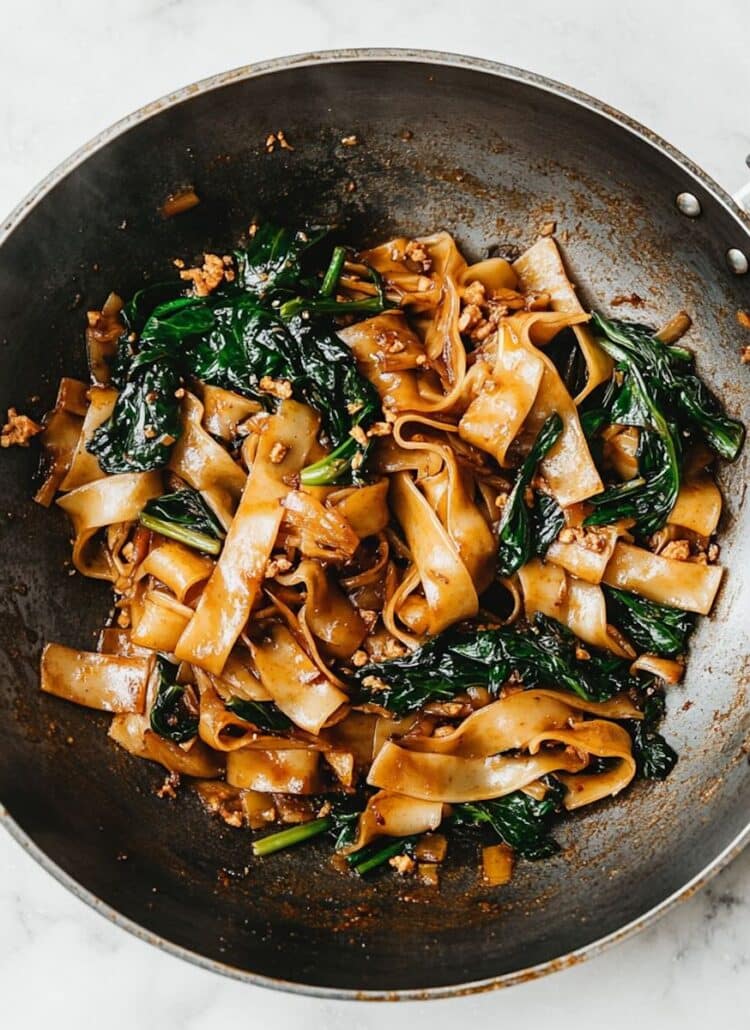
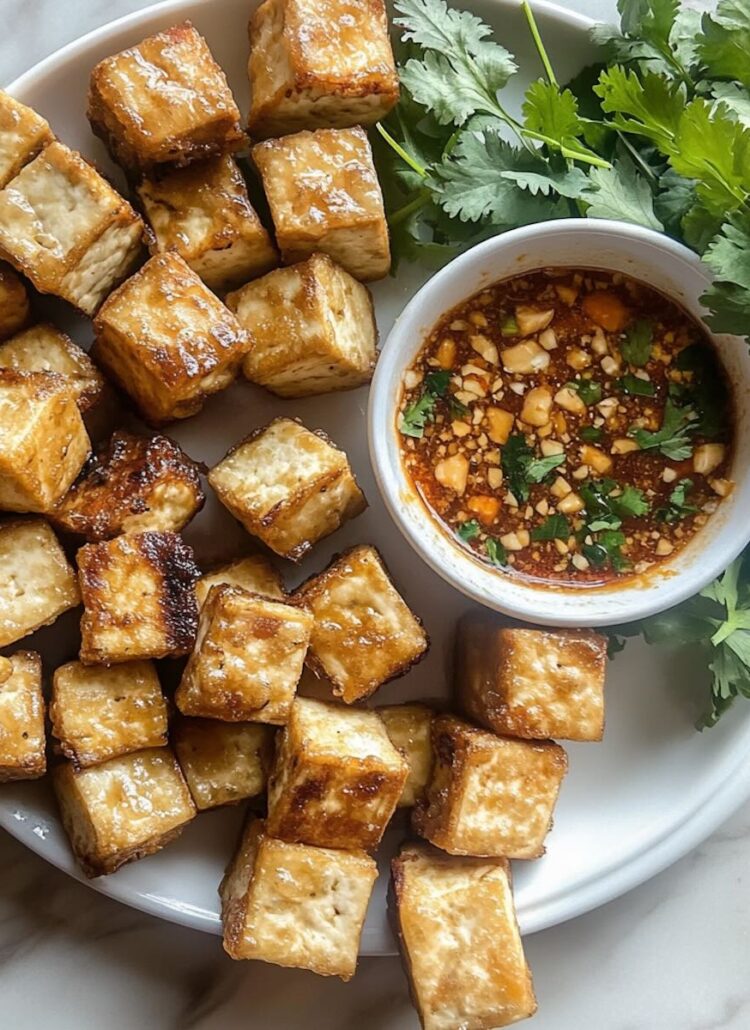
Leave a Reply